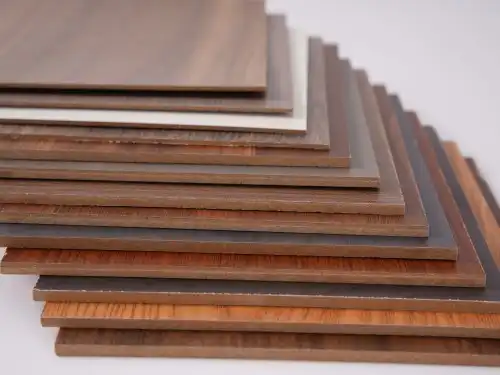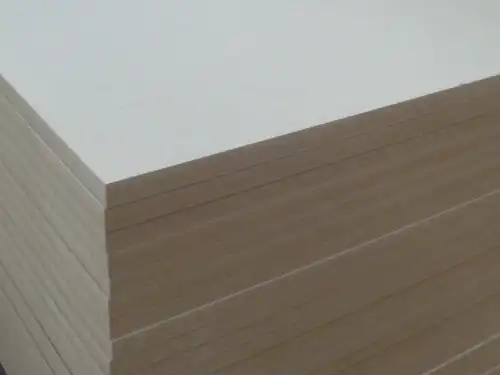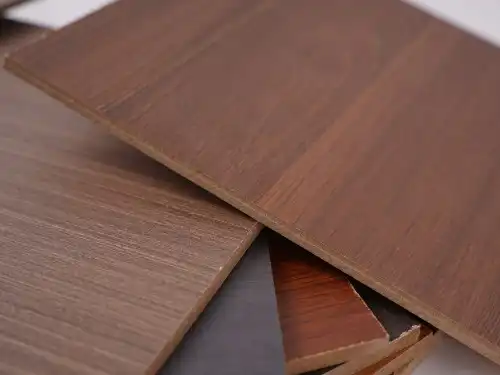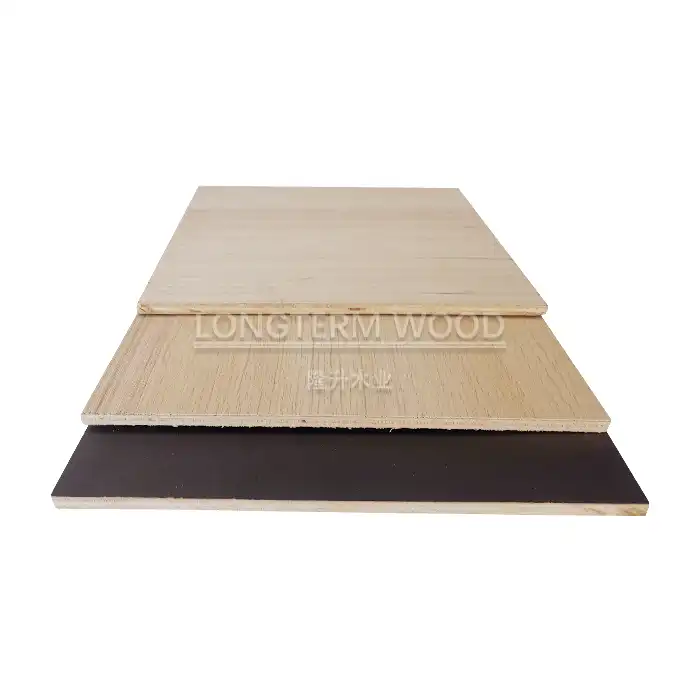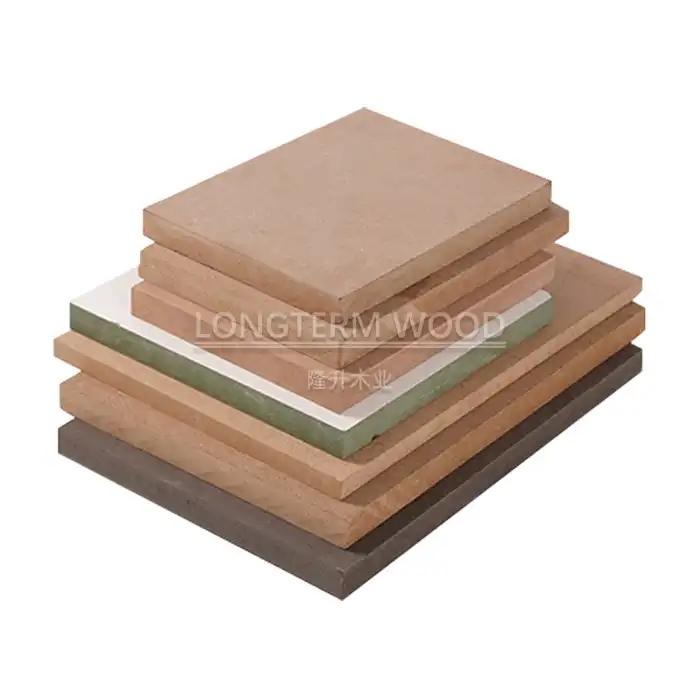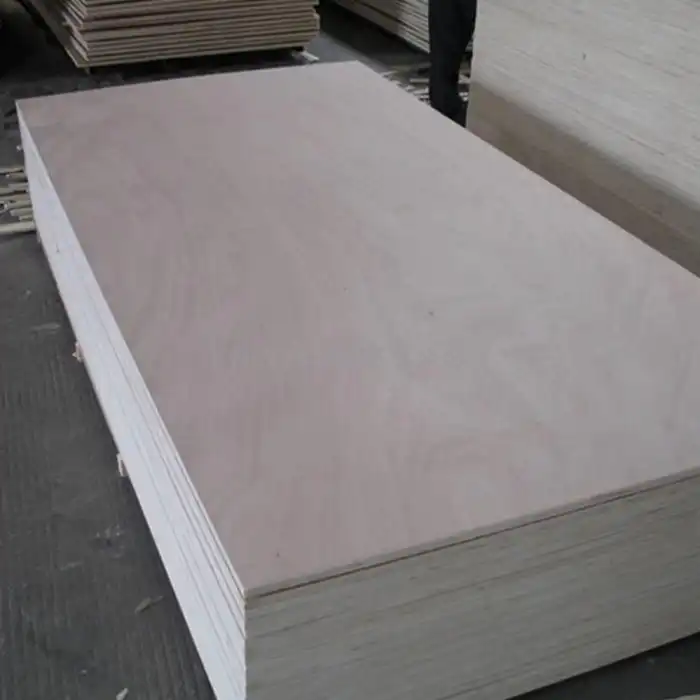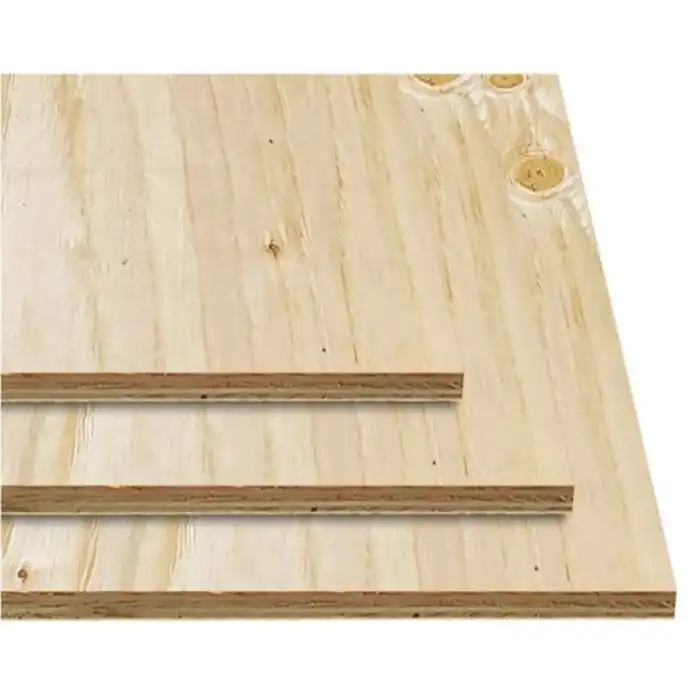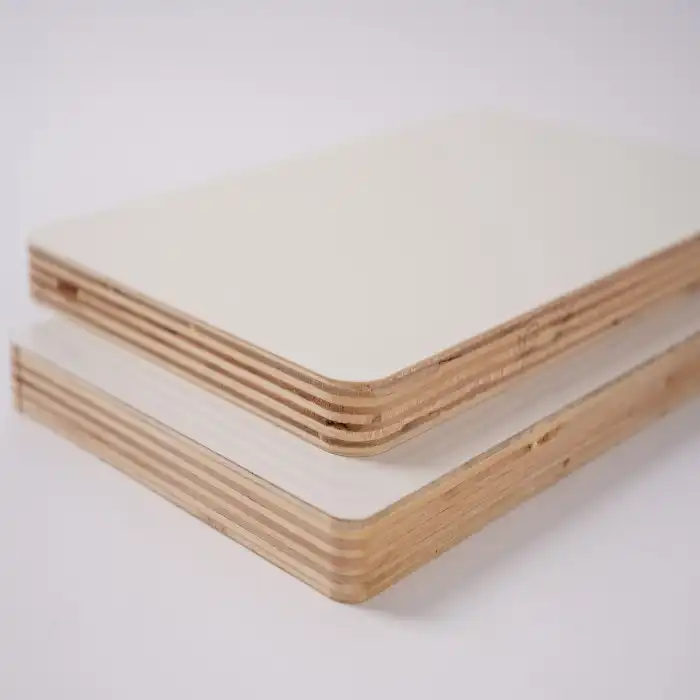
What Color Options Are Trending for Melamine Plywood?
2025-05-29
In the ever-evolving world of interior design and furniture manufacturing, staying current with color trends is essential for creating contemporary spaces that resonate with modern aesthetics. Melamine Plywood, with its versatile nature and exceptional durability, has become a preferred material choice for designers and manufacturers alike. This article explores the latest color trends dominating the melamine plywood market, offering insights into how these trending palettes can transform your next project while maintaining the superior quality and functionality that melamine surfaces are known for.
The color landscape for Melamine Plywood has significantly evolved in recent years, moving beyond traditional wood tones to embrace a diverse spectrum of hues and finishes. Current trends showcase a fascinating blend of nature-inspired neutrals, bold statement colors, and sophisticated metallics that add depth and character to any application. From furniture manufacturing to interior decoration, these trending colors provide endless possibilities for creative expression while maintaining the practical benefits of Melamine Plywood, including scratch resistance, water resistance, and long-lasting performance that withstands the test of time in both residential and commercial settings.
Nature-Inspired Neutrals Leading the Market
Earthy Tones and Organic Hues
The resurgence of biophilic design has catapulted earth-inspired colors to the forefront of melamine plywood trends. These natural palettes reflect our collective desire to connect with nature and bring organic elements indoors. Warm terracottas, subtle clay tones, sandy beiges, and soft moss greens dominate this category, creating spaces that feel grounded and tranquil. Manufacturers like Linyi Longterm Wood Industry Co., Ltd. have responded to this demand by expanding their Melamine Plywood color offerings to include these nature-derived hues, which pair beautifully with natural materials like stone, rattan, and live plants. The appeal of these colors lies not only in their aesthetic quality but also in their versatility—they create a neutral foundation that allows other design elements to shine while maintaining visual interest. What makes these earthy options particularly attractive is their timelessness; unlike trendy bright colors that may quickly feel dated, these organic neutrals have staying power, making them a wise investment for Melamine Plywood applications in furniture and cabinetry that are intended to last for years to come. The superior durability of Melamine Plywood ensures these natural colors maintain their integrity even in high-traffic areas, resisting wear and scratches while providing the warm, organic aesthetic that contemporary designs demand.
Soft Blues and Greens
Cool, calming blues and refreshing greens continue to gain momentum in the melamine plywood market, reflecting our collective desire for tranquility and wellness in interior spaces. Soft sage, eucalyptus, powder blue, and dusty teal have emerged as frontrunners in this category, offering subtle color that creates a serene atmosphere without overwhelming the senses. These nature-derived hues work exceptionally well in Melamine Plywood applications for bedroom furniture, bathroom cabinetry, and home office installations where a sense of calm is paramount. What makes these colors particularly attractive on Melamine Plywood is the material's ability to showcase these subtle tones with remarkable consistency across large surfaces—something that can be challenging with natural wood products. The eco-friendly nature of modern Melamine Plywood, adhering to strict E1 and E0 emission standards, also aligns perfectly with the environmental consciousness that these nature-inspired colors evoke. Manufacturers have perfected techniques to achieve these delicate blue and green tones while maintaining the superior scratch and moisture resistance that makes Melamine Plywood ideal for environments where beauty must be balanced with practicality. The versatility of these colors makes them suitable for both contemporary and transitional design schemes, offering longevity in style that extends well beyond passing trends.
Warm Neutrals and Sophisticated Grays
The neutral color palette for Melamine Plywood has expanded significantly beyond basic beige and white to include a sophisticated range of warm neutrals and complex grays. These contemporary neutrals—including greige (a perfect blend of gray and beige), taupe, mushroom, and charcoal—provide subtle depth and dimension that elevates any interior space. What distinguishes today's neutral Melamine Plywood options is their complexity; these are not flat, one-dimensional colors but rather multi-tonal finishes that mimic the subtle variations found in natural materials. This evolution in neutral melamine surfaces has been made possible through advanced manufacturing processes employed by industry leaders like Linyi Longterm Wood Industry Co., Ltd., where quality control teams inspect every stage of production to ensure color consistency and finish perfection. These sophisticated neutrals have particular appeal in commercial applications where Melamine Plywood must deliver both aesthetic refinement and exceptional durability. The practical advantages cannot be overstated—these colors effectively mask minor wear and tear, making them ideal for high-traffic areas where maintaining a pristine appearance is important. Additionally, these versatile neutrals provide excellent design flexibility, allowing for easy updates to surrounding decor elements without the need to replace the more permanent Melamine Plywood surfaces. This combination of sophisticated appearance and practical performance represents the ideal balance that today's designers seek in material selections.
Bold Statement Colors Making an Impact
Deep Blues and Navy Tones
The emergence of deep blues and navy tones represents one of the most significant shifts in Melamine Plywood color trends in recent years. These rich, saturated hues have transcended their traditional association with coastal themes to become new neutrals in contemporary interior design. Navy, indigo, and midnight blue Melamine Plywood surfaces deliver dramatic visual impact while maintaining unexpected versatility in application. What makes these deep blues particularly effective on Melamine Plywood is the material's ability to present consistent color saturation across large surfaces without the variations that might occur with painted wood. The high-quality manufacturing processes employed by Linyi Longterm Wood Industry Co., Ltd. ensure these bold colors maintain their depth and richness throughout the production process, resulting in Melamine Plywood products that make a powerful design statement. These deep blues pair exceptionally well with metallic hardware, creating striking contrasts that elevate cabinetry, furniture, and wall panels to statement pieces rather than merely functional elements. The practical benefits of Melamine Plywood become particularly valuable with these darker hues—the surface's resistance to scratches, water, and wear ensures these bold colors maintain their integrity even in demanding environments. Commercial applications, including retail fixtures, restaurant interiors, and office furniture, have embraced these deep blue tones for their ability to create sophisticated, memorable spaces that stand out from competitors while benefiting from the cost-effectiveness and durability that Melamine Plywood provides.
Dramatic Blacks and Charcoals
The trend toward dramatic dark colors in Melamine Plywood represents a bold departure from the light, airy aesthetics that dominated previous years. Matte black, charcoal, and deep anthracite finishes have emerged as powerful options for creating striking architectural and furniture statements that command attention in any space. These dark hues on Melamine Plywood surfaces create a sense of luxury and sophistication previously associated only with high-end materials, yet delivered at the accessible price point that makes Melamine Plywood such a popular choice among designers and manufacturers. The technical advantages of Melamine Plywood become particularly evident with these dark colors—the surface's resistance to fingerprints (especially in specialized matte finishes) and its ability to maintain color consistency even with extensive handling make it ideal for these dramatic applications. Leading manufacturers like Linyi Longterm Wood Industry have invested in advanced production techniques that ensure these dark Melamine Plywood options deliver the depth and richness designers expect while maintaining the material's core performance benefits. These dark tones excel in creating striking contrasts when paired with lighter elements, making them perfect for accent pieces, feature walls, or statement furniture. In commercial applications, black and charcoal Melamine Plywood creates sophisticated retail displays, hospitality environments, and office spaces that feel current and design-forward. The durability factor becomes especially important with these darker options—Melamine Plywood's resistance to wear ensures these bold design choices will maintain their impact for years without showing the signs of aging that might occur with other materials.
Rich Jewel Tones
Vibrant emerald greens, ruby reds, amethyst purples, and sapphire blues have emerged as exciting color options in the Melamine Plywood market, bringing unexpected energy and personality to interior spaces. These jewel tones represent a significant departure from safe, neutral palettes, offering designers and homeowners the opportunity to create truly distinctive environments that reflect individual personality and brand identity. The appeal of these rich colors on Melamine Plywood stems from the material's ability to showcase these vibrant hues with remarkable clarity and consistency—qualities that can be difficult to achieve with other materials without significant expense. The superior finishing techniques employed by Linyi Longterm Wood Industry Co., Ltd. ensure these bold colors maintain their vibrancy while benefiting from all the practical advantages that make Melamine Plywood such a versatile choice. These jewel tones are particularly effective in commercial environments where creating memorable, Instagram-worthy spaces drives customer engagement and brand recognition. Retail fixtures, hospitality environments, and creative workspaces have embraced these vibrant Melamine Plywood options to create distinctive atmospheres that stand out in competitive markets. What makes these bold colors particularly practical on Melamine Plywood is the material's resistance to fading and wear—even these saturated hues maintain their integrity over time despite exposure to light and regular use. When strategically incorporated into furniture pieces or architectural elements, these jewel-toned Melamine Plywood surfaces create focal points that anchor entire design schemes while delivering the durability and cost-effectiveness that make them practical choices for both commercial and residential applications.
Innovative Finishes Transforming Traditional Colors
High-Gloss and Ultra-Matte Contrasts
The finish of Melamine Plywood has become as important as color in creating distinctive design statements, with high-gloss and ultra-matte options representing opposite ends of the aesthetic spectrum that are simultaneously trending. These contrasting finishes transform even basic colors into remarkable surfaces that interact with light in fundamentally different ways—high-gloss finishes reflect light dramatically, creating a sense of depth and luminosity, while ultra-matte surfaces absorb light, delivering a soft, velvety appearance that feels contemporary and sophisticated. Linyi Longterm Wood Industry Co., Ltd. has positioned itself at the forefront of this trend, investing in advanced manufacturing technology that produces these specialized finishes while maintaining the durability that makes Melamine Plywood so practical. What makes these finish options particularly valuable is their ability to elevate simple color choices—a basic white or gray becomes extraordinary when presented in an ultra-matte finish that feels soft to the touch, while a navy blue transitions from traditional to dramatic when rendered in a high-gloss surface that reflects its surroundings. The practical benefits of Melamine Plywood become especially important with these specialized finishes—the surface's inherent resistance to wear ensures these distinctive aesthetic qualities endure despite regular use. Commercial applications have embraced this finish-focused approach to create distinctive environments where the interplay of light on surfaces becomes an integral part of the design experience. Retail environments, in particular, benefit from high-gloss Melamine Plywood that creates a sense of luxury and sophistication, while residential applications often favor the understated elegance of ultra-matte finishes that hide fingerprints and maintain a clean appearance with minimal maintenance.
Textured Wood-Look Finishes
The evolution of wood-look finishes on Melamine Plywood represents one of the most significant technological advancements in the industry, creating surfaces that not only visually mimic natural wood but also replicate its textural qualities. These sophisticated finishes—including synchronized wood grain textures where the visual pattern perfectly aligns with the tactile surface variations—have elevated Melamine Plywood from a practical alternative to a preferred choice that offers advantages beyond natural wood. The current trend favors realistic representations of oak, walnut, and ash with authentic grain patterns and color variations that create remarkable authenticity. Linyi Longterm Wood Industry Co., Ltd.'s commitment to quality control throughout the production process ensures these complex textured finishes maintain perfect alignment and consistency across each panel. What makes these wood-look options particularly appealing is their ability to deliver the aesthetic warmth of natural wood while offering superior resistance to moisture, scratches, and wear—making them ideal for environments like kitchens and bathrooms where natural wood might be problematic. The eco-friendly nature of modern Melamine Plywood also addresses sustainability concerns that sometimes arise with natural hardwoods, as these products adhere to strict environmental standards including E1 and E0 formaldehyde-free classifications. Contemporary interior design frequently combines these realistic wood-look Melamine Plywood surfaces with solid colors to create visual interest and contrast within a space. The practical benefits extend to maintenance as well—these surfaces require no oiling, polishing, or refinishing over time, maintaining their beauty with simple cleaning while delivering the warmth and character that makes wood such an enduring design element.
Metallic and Pearlescent Effects
The integration of metallic and pearlescent finishes represents the luxury frontier in Melamine Plywood offerings, creating surfaces with subtle luminosity and depth that catch and reflect light in captivating ways. These sophisticated finishes—including champagne, rose gold, bronze, and silver with varying degrees of metallic sheen—add a dimension of luxury previously unavailable in laminated wood products. The technical achievement of creating these complex finishes on Melamine Plywood demonstrates the manufacturing expertise of companies like Linyi Longterm Wood Industry Co., Ltd., where advanced production techniques have made these premium aesthetics accessible at reasonable price points. What distinguishes these metallic and pearlescent options is their ability to create visual interest that changes as viewing angles and lighting conditions shift throughout the day, bringing a dynamic quality to fixed architectural elements and furniture pieces. These finishes have found particular favor in hospitality environments, luxury retail spaces, and upscale residential applications where creating a sense of refined elegance is paramount. The practical advantages of Melamine Plywood become especially valuable with these specialized finishes—the surface's durability ensures these complex visual effects maintain their integrity despite regular use, something that can be challenging with painted metallic finishes on other materials. When strategically incorporated as accent elements within a larger design scheme, these metallic and pearlescent Melamine Plywood surfaces create focal points that elevate the perceived value of the entire space. The design versatility is remarkable—these finishes complement both ultra-modern minimalist environments and more traditional spaces seeking contemporary updates, making them a sound investment for projects aiming for distinctive visual impact while maintaining the practical benefits that have made Melamine Plywood a trusted material choice for designers and manufacturers worldwide.
Conclusion
The evolving color palette for Melamine Plywood offers unprecedented design flexibility while maintaining the material's renowned durability and performance benefits. Whether you prefer calming neutrals, bold statements, or innovative finishes, Linyi Longterm Wood Industry Co., Ltd. delivers customized, high-quality solutions backed by 20+ years of manufacturing excellence. Ready to transform your next project with trending melamine plywood options? Contact our team today at howie@longtermwood.com to discuss custom requirements or request samples!
References
1. Anderson, M. (2024). "Sustainable Materials in Modern Design: The Rise of Colored Melamine Surfaces." Journal of Interior Design Technology, 18(2), 145-162.
2. Wilson, J., & Thompson, R. (2023). "Color Psychology in Commercial Spaces: Impact of Material Selection on Customer Experience." Retail Design Quarterly, 45(3), 78-96.
3. Chang, L. (2024). "Manufacturing Innovations in Wood-Based Products: Advances in Melamine Plywood Production." International Journal of Materials Engineering, 29(4), 312-328.
4. Martinez, S., & Johnson, P. (2023). "Global Color Trends in Architectural Materials: A Five-Year Forecast." Architectural Materials Review, 12(1), 34-52.
5. Patel, R. (2024). "Comparative Analysis of Durability Factors in Decorative Wood Products." Journal of Sustainable Building Materials, 15(3), 205-219.
6. Zhang, H., & Miller, D. (2023). "The Economics of High-Performance Laminated Wood Products in Commercial Construction." Commercial Building Economics, 31(2), 187-203.







